Every night, we watch basketball through the prism of history. James Harden is the first player to accomplish Feat X since Player Y in Year Z. The Spurs’ new offense is a stark deviation from previous iterations. Giannis looks like Shaq. Nowhere does this tendency manifest more prominently than in coverage of young players, who enter the basketball intelligentsia’s collective consciousness as blank slates only to quickly weave familiar patterns and hew to comfortable scripts.
To better understand their games and better predict their futures, we rely on that familiarity, and thus use the known to forecast the unknown. That’s the whole basis for player comps, which help chart potential outcomes, and which can be based on any number of factors: looks, playing style, handedness, personality, nationality, and so on.
Let’s add a statistical basis to the mix. As we reach the halfway point of the NBA season, we’ve decided to compare every rookie in the lottery of the hyped 2018 draft class with every other rookie from this century who played enough minutes to qualify for Basketball-Reference’s leaderboards. Here’s the methodology we used (and if math isn’t your thing, feel free to skip straight to the list): Using z-scores and a set of complementary statistics, we generated similarity scores to see how closely every previous player’s rookie campaign matches with every new player’s current one. We chose the stats to encompass each rookie’s playing style (usage rate; 3-point attempt rate, or the percentage of total shots taken from distance; free throw rate, or the number of free throw attempts per every field goal attempt; and true shooting percentage) and statistical profile (per-game averages for points, rebounds, assists, and steals and blocks combined to measure defense), then added the similarity numbers for each stat together to form one overarching score for every player pairing.
Among players in the 2018 lottery, the most similar comp belongs to Miles Bridges, whose numbers look a whole lot like teammate Nicolas Batum’s rookie numbers; the least similar belongs to Trae Young, whose profile places him worlds away from Omer Asik. (Indeed, it’s a challenge to imagine two more disparate players; this method thus passes an early test.) It’s important to note that these comps are inherently backward-looking; they can work as predictive tools, but they aren’t guaranteed to do so. Rookie LeBron’s two closest comps since 2000 are Michael Carter-Williams and Tyreke Evans, and we all know they both turned into perennial MVP contenders. (Nos. 3, 4, and 5, respectively, are Carmelo Anthony, Kevin Durant, and Russell Westbrook; the whole system isn’t busted.)
And because we’re comparing half-seasons for contemporary rookies to full seasons from past rookies, odds are some of these numbers will shift dramatically by season’s end. Perhaps a rehash after the season will be in order. For now, let’s run through the lottery picks, in the order they were drafted, and their top-five rookie comps, starting with the no. 1 overall selection. (All stats in this piece are through Sunday’s games.)
Deandre Ayton
Top Five Comps: (1) Karl-Anthony Towns, (2) Nikola Jokic, (3) John Collins, (4) Brook Lopez, (5) Al Horford
What It Means: Ayton is going to enjoy a long and lucrative career. Lopez and Horford have already earned more than $100 million in their careers, and Towns and Jokic have signed extensions that will take them into the triple digits before they turn 30. But we knew that much about Ayton already—the majority of players who have averaged a 15-10 rookie season have since been enshrined in the Hall of Fame, and Ayton’s 17-11 average, if he maintains it for the rest of the season, qualifies him for that group.
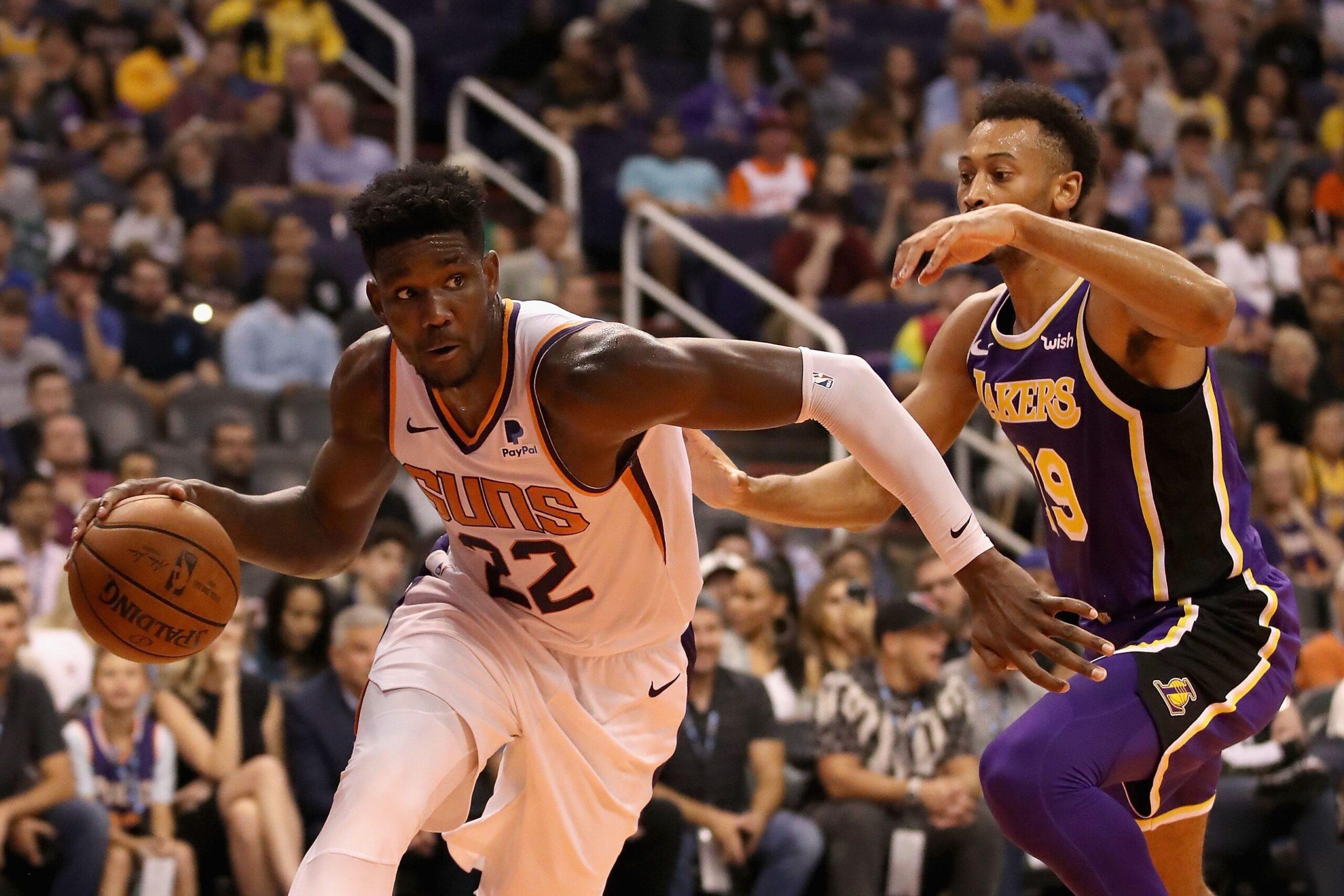
It should encourage prognosticators to see Towns at the top of this list, as the Wolves center was a frequent pre-draft reference point for Ayton, and the early numbers bear out the on-court similarities between the two no. 1 picks. The interesting wrinkle for Ayton is that Towns aside, none of these comps has a particularly robust similarity score with him.
That near singularity stems in part from Ayton’s success—it’s easier to mimic middling numbers than outstanding ones—and in part from his status as a kind of throwback big. The latter notion intrigues because while Ayton would have been an obvious franchise cornerstone 20 years ago, his future is less certain amid the broader basketball changes that have emerged in the meantime. Ayton could stand to shoot more 3s—he’s 0-for-2 this season, total, after attempting one per game in college, even though his 78 percent free throw percentage suggests promising form—and though these scores capture mostly offensive rather than defensive output, it’s fitting to see a spotty defender like Towns atop his list.
Marvin Bagley III
Top Five Comps: (1) Nenad Krstic, (2) Jason Thompson, (3) Nikola Jokic, (4) Yao Ming, (5) John Collins
What It Means: Take Bagley’s comps with a grain of salt—the Kings rookie hasn’t played since mid-December and received only sporadic minutes for a time before then. (Over the weekend, Bagley lost his qualification for the league’s leaderboards.) Still, the available numbers show that Bagley has turned in an Ayton-lite rookie campaign, with fine scoring and rebounding totals for his minutes load and similar defensive struggles.
While Bagley hasn’t shot as effectively as Ayton—no rookie since 2000 who has qualified for the field goal percentage leaderboard has—he has compensated by getting to the free throw line more frequently than any rookie in this class. After the baffling Kings took Bagley over Luka, the no. 2 pick might always be linked with the Mavericks’ future star, but that connection doesn’t automatically relegate Bagley to Sam Bowie status.
If there is a main worry for Bagley, it’s that he’ll prove unable to break out of a tweener role—too poor a defender to anchor a defense as the 5, but not stretchy enough to fill the 4-spot. The presence of mostly nonshooters atop his comps list is thus a point of concern, but it’s early, and the Kings, mired in their first real playoff race in years, should hope he’ll return soon for the sake of both the 2018-19 team and his personal future.
Luka Doncic
Top Five Comps: (1) Tyreke Evans, (2) Brandon Roy, (3) Steve Francis, (4) Damian Lillard, (5) Carmelo Anthony
What It Means: The top comp for Doncic had a worse similarity score than any other rookie’s top comp on their list; in other words, Doncic is the most singular rookie in this class. It’s not hard to see why, from either the prolific highlight reels or the box scores. Luka, for instance, is the best-ever personification of Moreyball in a rookie: No previous first-year player had ever taken such a high percentage of 3s and free throws while shooting enough to qualify for the field goal percentage leaderboard.
Luka doesn’t just take more efficient shots; he makes them, too. No rookie this century had Doncic’s combination of usage rate and true shooting percentage (and before this century, the few rookies to best him had names like Michael Jordan, Tim Duncan, and Shaquille O’Neal). Or, for another point of comparison, Doncic’s rookie-season TS% is 56.1; Steph Curry’s was 56.8.
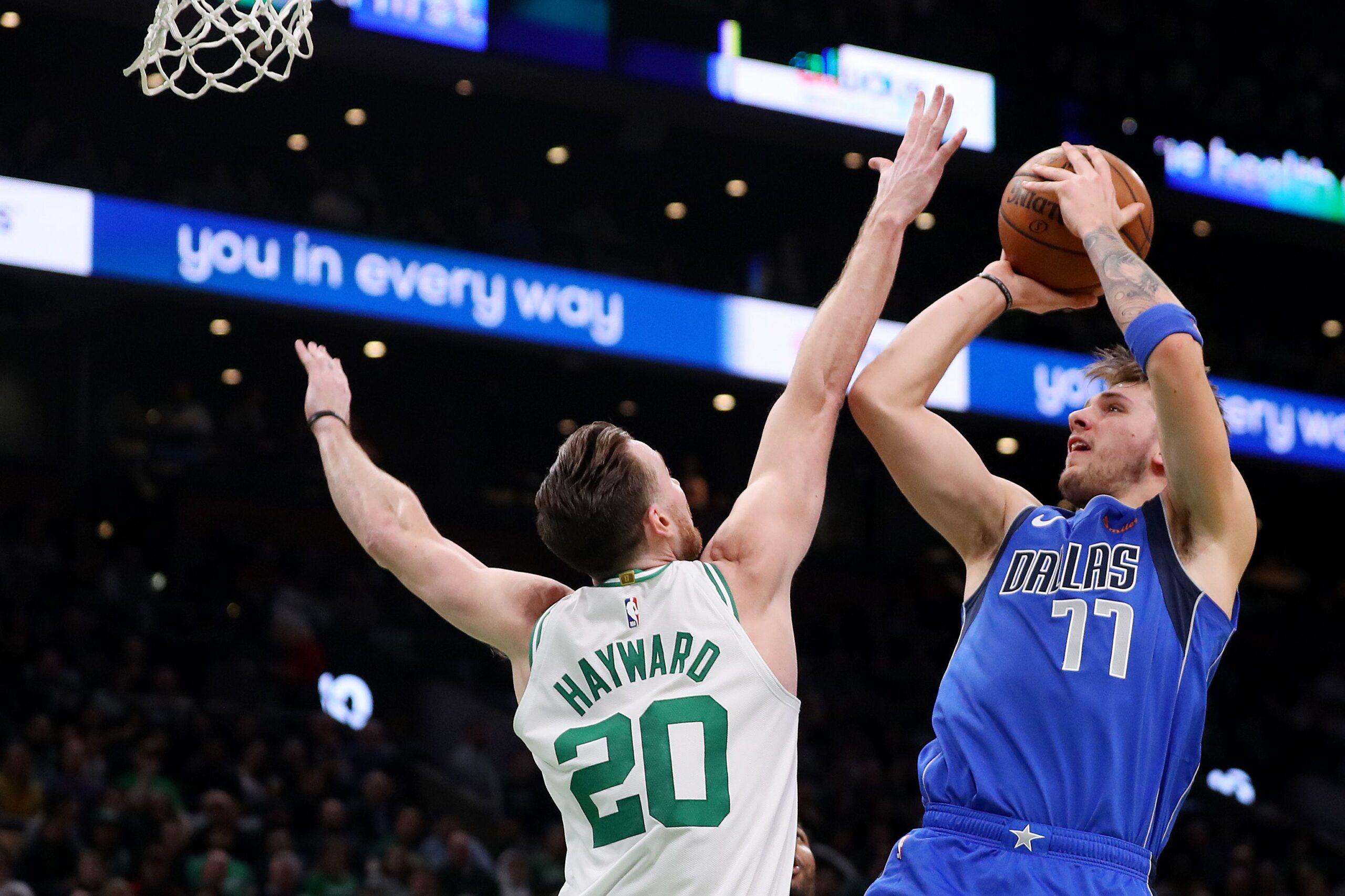
And Luka is also an extraordinary passer for his age and size: Only five rookies taller than Doncic—among them LeBron, Magic Johnson, and Ben Simmons—have ever averaged so many assists.
With those caveats in mind, Doncic’s comps are still revealing about his multifaceted success thus far. His top five are mostly guards, thanks to his assists, but they could all score in bunches, too—and the one exception, Anthony, made a Hall of Fame career out of the latter. Lest any Dallas fans be concerned by Evans claiming the top spot, remember the former Sacramento King’s remarkable entrance to the NBA: Evans won Rookie of the Year honors over Curry, and he became just the fourth rookie ever to average 20 points, five rebounds, and five assists per game, joining Oscar Robertson, Michael Jordan, and LeBron. (Luka is mere fractions of per-game stats away from becoming the fifth.)
Of course, these comps also highlight the possibility that Doncic will never fulfill his potential, whether because he will peak as a rookie talentwise (like Evans) or suffer debilitating and unexpected injuries (Roy). But Luka’s achievements as a rookie are already unprecedented. The main reason someone like LeBron doesn’t show up as a top comp, despite similar per-game stats, is because Luka outperforms the King in key areas—more 3-point attempts, a higher free throw rate, and much better shooting overall.
Jaren Jackson Jr.
Top Five Comps: (1) Jayson Tatum, (2) Kristaps Porzingis, (3) Shane Battier, (4) Metta World Peace, (5) Victor Oladipo
What It Means: This result, at first glance, seems rather strange. Jackson is 6-foot-11 and tips the scale past 240 pounds, and most of his top rookie comps are smaller wings? It makes sense for a few reasons. The first is that Jackson’s rebounding (just 4.8 per game) is rather light for a big; this seems like a concern, but the nearby presence of Marc Gasol diminishes his individual rebounding opportunities, and Jackson’s contested-rebound rate is one of the best in the league.
And outside that area, Jackson’s comps speak well to his potential as the ideal modern center. Like Porzingis, he actually does mix elements of a wing’s skill set with elements of a big’s. If he were 3 inches shorter and just a small forward, he would still have a bright future; look at how eerily similar his key rookie numbers are to Tatum’s. They were even both 19 years old!
Jackson: 13.5 points, 4.8 rebounds, 1.2 assists; 60 percent TS, 25 percent 3PAr, 32 percent FTR
Tatum: 13.9 points, 5.0 rebounds, 1.6 assists; 59 percent TS, 29 percent 3PAr, 31 percent FTR
But Jackson is 3 inches taller than Tatum, and, compared with his peers, he gets to the free throw line more than Ayton and shoots 3s at a better clip than Trae Young. Plus he is already a game-changing defensive force, allowing opponents to shoot less than 50 percent at the rim—a top-five mark in the whole league, and a skill that is generally stable year after year and predictive even partway through a player’s first season.
No player in NBA history, rookie or up-and-coming star or veteran, has ever combined Jackson’s 3-point, block, and true shooting rates. This result doesn’t mean he’s necessarily Tatum crossed with Porzingis, but you’d be forgiven for dreaming of the possibility.
Trae Young
Top Five Comps: (1) Brandon Jennings, (2) Damian Lillard, (3) Jonny Flynn, (4) Dennis Smith Jr., (5) Kemba Walker
What It Means: As was perhaps apparent before the draft, no rookie in this class contains a more volatile future projection than Young. He could harness his pre-draft potential and develop into an All-Star like Lillard or Walker, or he could wash out of the league before his rookie contract expires like Flynn. At the very least, like with Smith, his future in Atlanta might descend into immediate peril depending on the Hawks’ draft selections this spring.
Young’s main problem is that his most appealing attribute coming out of college—the ability to create his own offense from anywhere on the court—hasn’t materialized in the NBA. He’s made just 29 percent of his 3s on 4.9 attempts per game; no rookie has ever taken so many 3s while shooting so poorly from beyond the arc. Young was compared to Curry coming out of college, but Steph shot 44 percent from 3 as a rookie on about the same number of attempts. (It’s also worth noting that this comparison was unfair, both because Curry is a two-time MVP and because in college, Curry was a 41 percent 3-point shooter, while Young sat at 36 percent.)
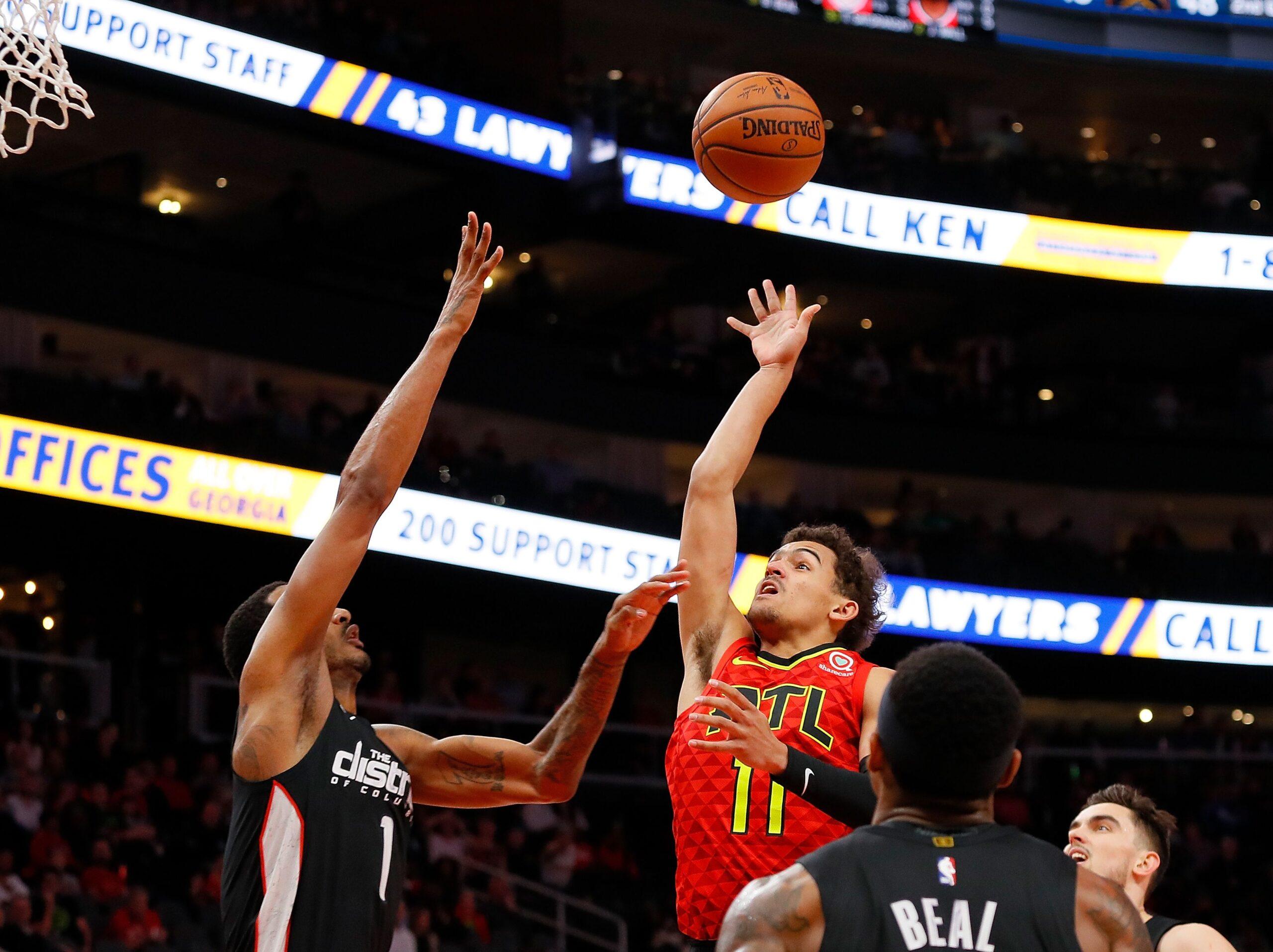
But Young’s problem isn’t only a lack of shooting touch. His usage rate is obscene for the kind of production he’s wrought from all that dribbling. Among all NBA players this season with his kind of usage, Young has the third-worst TS%, alongside 36-year-old Dwyane Wade and 34-year-old J.J. Barea. Even on a tanking Atlanta team, that kind of distribution is a significant concern.
Making matters worse for Young is that the numbers used for this exercise don’t really capture the totality of his demerits on the defensive end. The similarity scores don’t know, for instance, that out of 473 NBA players this season, Young has the worst defensive real plus-minus. Atlanta’s defense is 7.4 points per 100 possessions better with Young off the court, while its offense doesn’t stumble by even half a point with Young sidelined. An inefficient scorer and porous defender has little future in the NBA, and while Young still has plenty of time to turn his career around—heck, Walker didn’t make the leap to All-Star until his sixth season—the early returns are mighty discouraging.
Mo Bamba
Top Five Comps: (1) Marquese Chriss, (2) Danny Granger, (3) Mehmet Okur, (4) Omri Casspi, (5) Markieff Morris
What It Means: Bamba is the lost rookie in this top 10. Stuck in a Magic frontcourt otherwise populated by recent lottery picks and a resurgent Nikola Vucevic, Bamba has played 20 minutes just once since November 5, when Vucevic missed the game on paternity leave. Using per-game instead of per-minute numbers for this exercise thus makes Bamba look worse than he might actually be, but even substituting in the latter yields a group of underwhelming comps. (In that scenario, Chriss would still be Bamba’s top comp, Morris would be no. 2, and K.J. McDaniels would join his top five.)
Moreover, while minute allocations are ultimately a coach’s purview, it’s also incumbent upon rookies like Bamba to prove they deserve more playing time, and the big man has yet to do so. Further complicating matters for Bamba’s similarity scores is his 3-happy profile, which is a recent phenomenon for players of his size. The problem for Bamba is he’s not shooting particularly well, with a 29 3-point percentage and 55 free throw mark reflecting poorly on his hyped offseason strides as a shooter.
Ultimately, it’s a challenge to know what to even make of these comps, or indeed of Bamba’s entire body of work to date. There are a lot of similarities to Chriss, another raw top-10 pick who exhibited sporadic flashes amid broader inconsistency as a rookie—and then fell off rather dramatically. That’s not necessarily a damning indicator about Bamba’s future—indeed, his other top comps survived to become sturdy NBA veterans, even if their relation to Bamba is a bit more puzzling—but it doesn’t exactly inspire warm feelings, either.
Wendell Carter Jr.
Top Five Comps: (1) Nikola Jokic, (2) Darius Miles, (3) Myles Turner, (4) Josh Childress, (5) Luis Scola
What It Means: The Bulls rookie has seen some early momentum stall of late, with interim coach Jim Boylen yanking Carter’s minutes around with no apparent consistency. (“Well, sometimes you learn by sitting, too,” Boylen said last week in a moment of unintentional dark comedy.) Yet even amid organizational chaos, Carter has amassed a collection of encouraging numbers; he doesn’t excel in any one statistical area, but he is at least respectable in all facets.
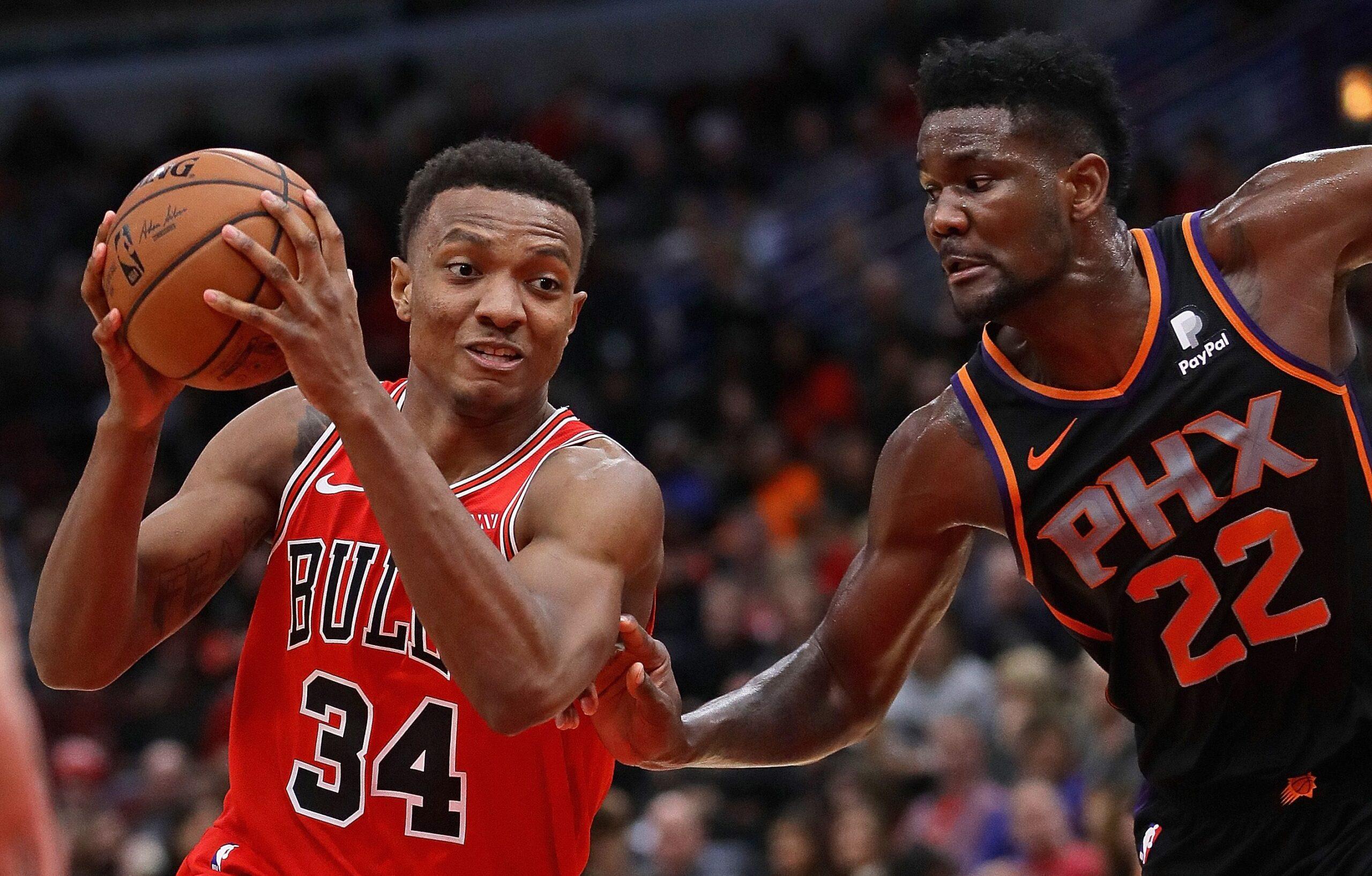
Carter’s comps paint a modestly encouraging picture, with plenty of aspirational upside supplied by Jokic and Turner and a dose of downside supplied by Miles and Childress as well. At least the latter part is explainable: Like Bagley, Carter carries a whiff of tweener concern, but he seems better suited than his college teammate for a modern center role. His at-rim defense is stout, if not at Jackson’s preternatural level, and although his 3-point range hasn’t matriculated to the pros along with the rest of his game, he’s outshooting Bagley by 10 percentage points from the free throw line. Miles might have been a small-ball 5 if he’d arrived 20 years later, anyway.
Collin Sexton
Top Five Comps: (1) MarShon Brooks, (2) Chucky Atkins, (3) Jason Richardson, (4) Adam Morrison, (5) Richard Hamilton
What It Means: Yikes. It’s not a great sign for the Cavaliers’ point guard of the future that his top comps are not point guards, or that two of the top three (Brooks and Morrison) never averaged 10 points per game after their rookie seasons. But Sexton’s team is a mess, so it’s difficult to know whether to assign weight for his problems to himself or the broader, bleaker, LeBron-less situation he inherited.
Even within that more forgiving framework, it’s OK to wonder about Sexton’s future as an NBA point guard. Sexton ranks in the second percentile among point guards this season in assist-to-usage ratio, according to Cleaning the Glass, and this list of comps confirms how much he’s using the ball, compared with how little he’s passing. Even in a league that has embraced the score-first point guard, the best players at the position all create offense for their teammates as well as themselves.
Sexton is still young, of course, having turned 20 last week, and NBA offenses are complicated beasts—tricky to navigate, yet alone master. But his assist-versus-usage profile suggests he’s also starting from a lower baseline than perhaps any previous rookie point guard in league history. But while he struggles to grasp offensive balance, he also hasn’t contributed on the other end: Sexton’s DRPM is the second-worst in the league, ahead of only Young’s. It’s too early to give up on the rookie, but he might need to reinvent his game to make more robust NBA inroads.
Kevin Knox
Top Five Comps: (1) J.R. Smith, (2) Gordan Giricek, (3) Omri Casspi, (4) Markieff Morris, (5) MarShon Brooks
What It Means: J.R. is back, Knicks fans!
OK, not actually—Knox doesn’t bring Smith’s, let’s say, flair to Madison Square Garden, but this isn’t the most flattering list of comps regardless. The bad news for Knox is that his production has lagged in all areas this season. With just 0.9 assists per game, he doesn’t fare much better than Sexton in his assist-to-usage ratio (eighth percentile among forwards), and his inconsistent shooting gives him the worst TS% of any 2018 lottery pick. (Second worst is Sexton. They’re two peas in an inefficient pod.) Nor is Knox helping much on defense, with less than one steal and block combined per game; he ranks third from the bottom of ESPN’s DRPM leaderboard, ahead of only Young and—again—Sexton.
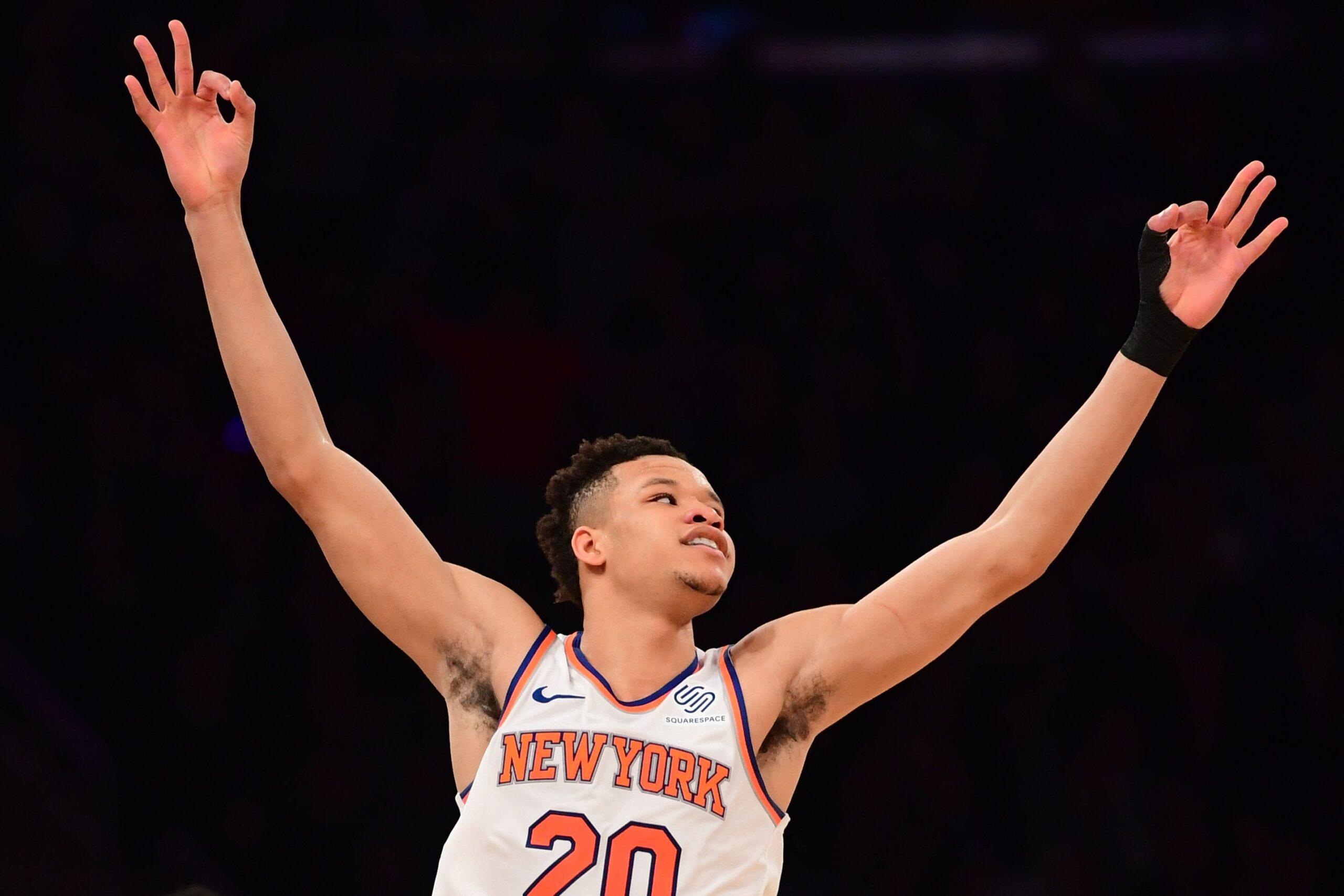
The good news is that Knox has played much better of late, averaging 16.9 points per game since the start of December compared to 7.5 points per game before then (albeit in double the minutes). Plug in just his numbers since December 1, and his top comp is Kyle Kuzma. It doesn’t require squinting to see the same DNA in both prestige franchises’ double-K forwards. Knicks fans had better hope so, at least: Knox’s broader comps suggest difficulty even cracking a playoff team’s rotation.
Knox’s case, which was also complicated by an early ankle injury, is a worthwhile reminder that rookie performance bobs and crests. It may also change even more significantly in the second half of the season, as the non-Doncic rookies—who have only ever experienced high school and college schedules—blow by their previous season highs for games played. Let’s reevaluate after the season to see whether Knox’s final comps make him look more like a promising, explosive wing or a future backup.
Mikal Bridges
Top Five Comps: (1) James Posey, (2) Joe Ingles, (3) Nicolas Batum, (4) Marcus Smart, (5) Courtney Lee
What It Means: Before the draft, the consensus opinion was Bridges was a safe prospect—not likely to overtake Ayton or Doncic as the best eventual player in the draft, but also not likely to fall outside a team’s rotation at any point in the coming years. This list of comps does nothing to dissuade that assessment; comps like Posey and Ingles put Bridges on the fast track toward 3-and-D mastery.
Nearly 60 percent of his shot attempts come from beyond the arc, and he leads this rookie class in steals. Bridges could probably stand to experiment more with his own offensive bounds, but he doesn’t have many opportunities playing alongside Ayton, Devin Booker, and T.J. Warren, and even though his usage rate is the lowest among 2018 lottery picks, he doesn’t need the ball to make his team better. (Read Jonathan Tjarks on why Bridges is a much better fit for the Suns than 2017 lottery pick Josh Jackson, whose usage rate this season is nearly double Bridges’s.) That’s another trait Bridges’s best comps share—they all make their teammates better, whether by spreading the floor or picking up defensive slack or adding an ineffable energy to a particular lineup combination.
If Bridges’s early returns are exactly what was expected of him, they do yield an interesting follow-up question: Would Posey’s career be an affirming or disappointing outcome for the no. 10 pick in the draft? It’s an interesting dilemma. On the one hand, Posey never made an All-Star team and shuffled around seven different franchises; on the other, he won two Finals, canned more than 1,000 career 3-pointers, and secured more than $57 million in career earnings. And his teams—like, presumably, Bridges’s future teams—were always thrilled to have him on their side.
Shai Gilgeous-Alexander
Top Five Comps: (1) Wally Szczerbiak, (2) Eric Bledsoe, (3) Malcolm Brogdon, (4) Vonteego Cummings, (5) Iman Shumpert
What It Means: Gilgeous-Alexander’s comps illuminate the rookie’s multifaceted potential. His NBA career can develop in so many different successful ways. Despite not taking a lot of shots (only 1.5 3-point attempts per game), SGA is effective making shots from 2-point range, 3-point range, and the free throw line, which hints at a possible future as a knockdown Szczerbiak type. He can thrive as a co-lead or secondary ball handler in a humming offense; he can mix standard sets with bursts of potent athleticism; he can twist into a 3-and-D role if all else fails.
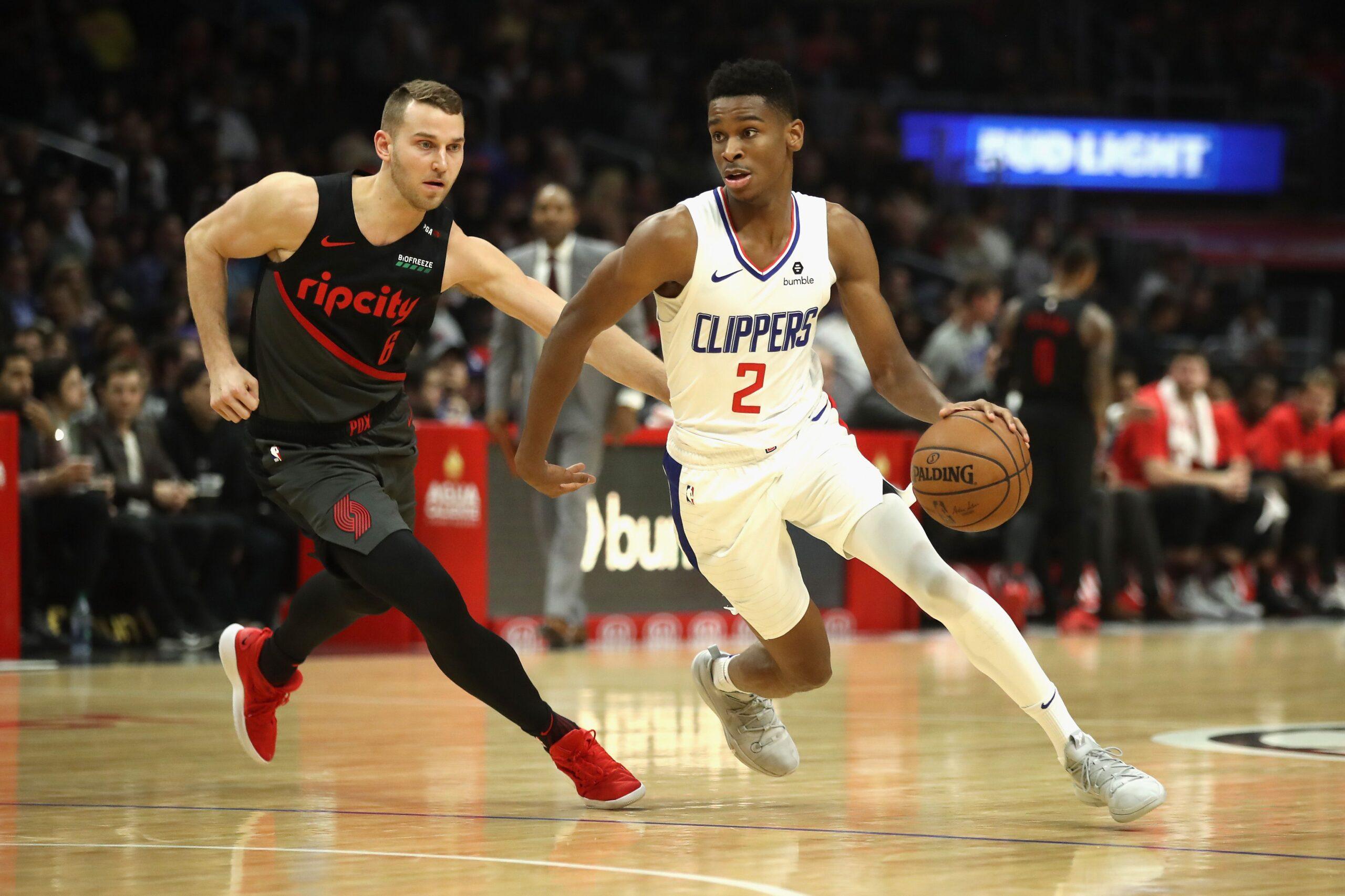
Clippers fans should heed some caution, to be fair: Their rookie’s comps lean more toward “solid starter” than “star,” and like most any member of the late lottery, SGA might falter; Cummings’s name on this list captures that possibility, as well. On a broader note, it speaks well of this rookie class that Gilgeous-Alexander is producing mighty similar rookie numbers as Brogdon—including the same minutes and points per game, down to the decimal point—yet the latter won Rookie of the Year honors, while the former won’t even sniff such consideration given his competition. Ayton, Doncic, and Co. could make this group an all-timer.
Miles Bridges
Top Five Comps: (1) Nicolas Batum, (2) Courtney Lee, (3) Maxi Kleber, (4) Royce O’Neale, (5) Kyle Singler
What It Means: Oddly enough, both Bridges receive similar comps, with Mikal—the more consistent, and consistently played, of the two—receiving slightly more favorable peers. Both Bridges’s median outcomes settle into the same range as a wing best used as a third or fourth option, and while Miles doesn’t possess the shooting acumen of Mikal, at least his comps can make shots from distance: Besides Kleber, they all connect at a 35 percent career clip or better on 3s. The back half of the lottery was evidently full of future 3-and-D aces.
Assorted Others
Jerome Robinson, the no. 13 pick, hasn’t played enough to draw meaningful conclusions, and Michael Porter Jr., the no. 14 pick, hasn’t played at all due to injury. In lieu of forcing comparisons for the last two lottery picks, then, let’s end by zipping through some fun and notable comps from outside the lottery:
- Some of Kevin Huerter’s top comps resemble Bridges’s top comps. Will Huerter have a better NBA career than fellow Hawks rookie Young? He at least appears headed for a more stable, defined future than his more touted teammate—and for what it’s worth, he’s made more 3s than Young this season despite taking far fewer attempts.
- Josh Okogie’s top two comps (Taurean Prince, Al-Farouq Aminu) rightly peg him as a 3-and-D wing who needs to develop the “3.” That conclusion jells with our draft guide’s assessment of Okogie last June, which deemed him “a versatile, high-energy wing who needs to refine his jump shot to fill the 3-and-D mold.” Surprises are fun, but it’s also nice to know some developments unfold exactly as expected.
- Mitchell Robinson’s top two comps are Willie Cauley-Stein and Jarrett Allen, which is the best proof of concept this exercise could possibly produce. Go forth and block shots, young Knick.
